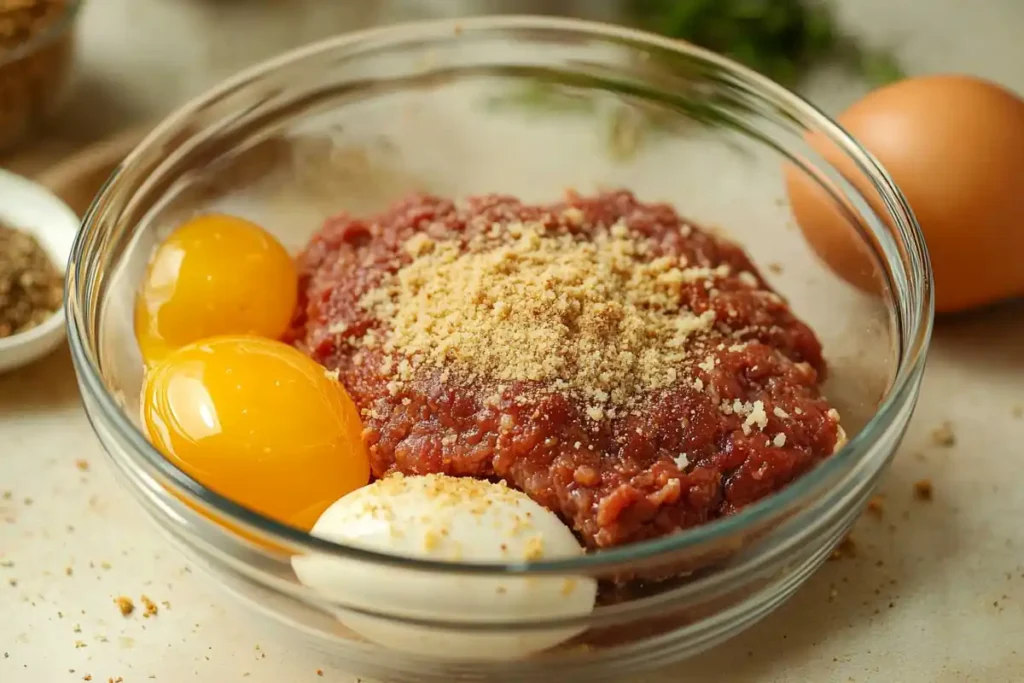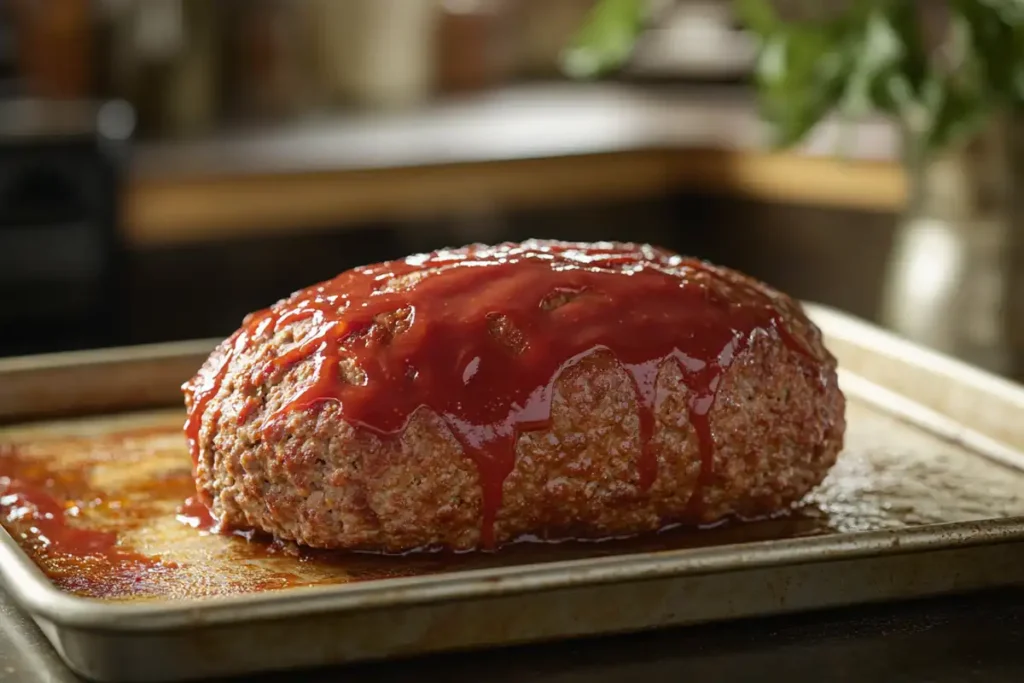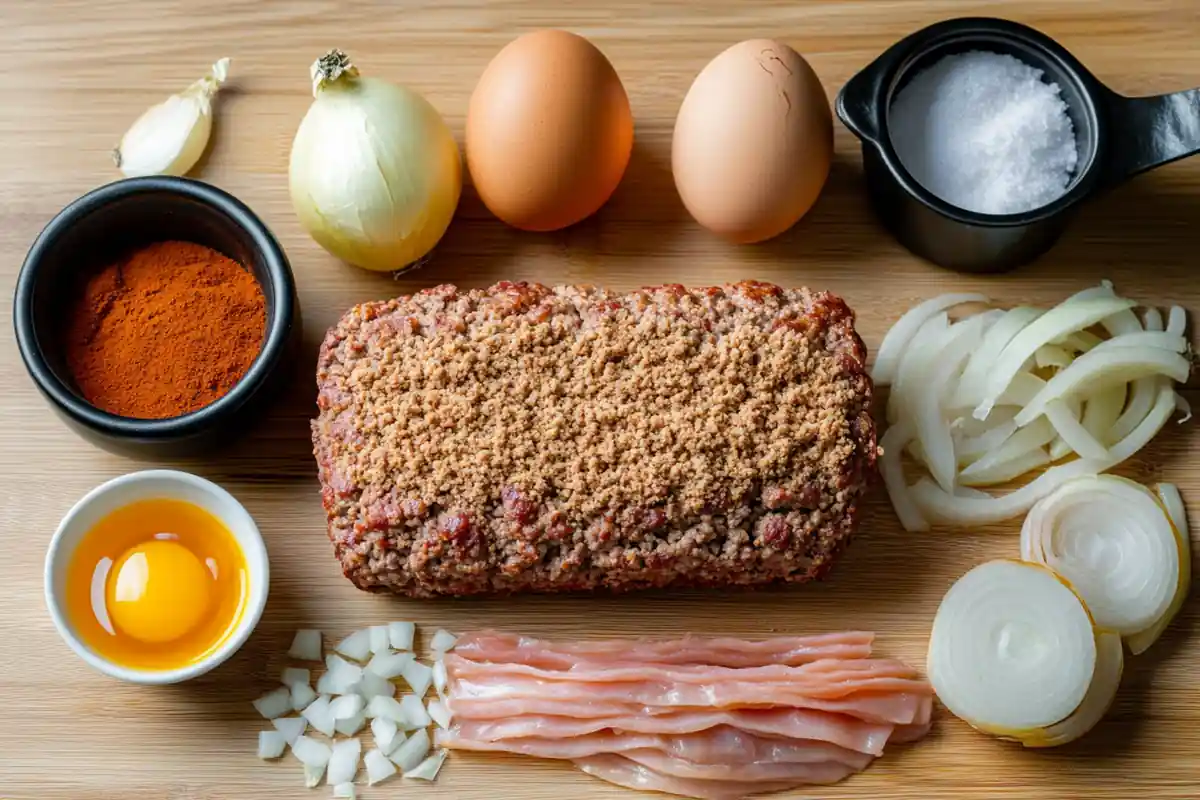Meatloaf is one of those classic comfort foods that has graced dinner tables for generations. But here’s the kicker: a good meatloaf can quickly turn into a dry, crumbly disaster if you don’t know the secret to keeping it moist. The good news? Perfecting a juicy and flavorful meatloaf isn’t as complicated as it seems.
This article will walk you through everything you need to know about the secret for making the perfect moist meatloaf.
Introduction to Moist Meatloaf
What is Meatloaf?
Meatloaf, in its simplest form, is a seasoned mixture of ground meat shaped into a loaf and baked to perfection. It’s a hearty dish that has evolved from humble origins into a culinary classic. While every family seems to have its own secret recipe, for achieving the perfect meatloaf, being moist and flavofull is what separates an average one from a truly memorable one.
Why Moisture Matters in Meatloaf
Let’s face it: no one wants a dry, flavorless loaf. The moisture in meatloaf not only affects its taste but also its texture. A dry meatloaf crumbles when sliced, losing that satisfying, tender bite. The secret lies in locking in the juices while ensuring the loaf holds together a tricky dance, but one that’s totally achievable with the right techniques.
Overview of the Article
In this guide, you’ll learn about the ingredients that contribute to a juicy meatloaf, the techniques for mixing and baking, and how to avoid common mistakes. By the end, you’ll have the confidence to create a meatloaf so good, people will be asking for your recipe.
Secret Ingredients for the Perfect Moist Meatloaf
Creating a moist and flavorful meatloaf starts with the right ingredients. But, it’s not just about tossing meat, breadcrumbs, and eggs into a bowl each element has a purpose and plays a role in the final texture. From the meat you choose to the liquids you add, the secret lies in understanding how each component works together.
Choosing the Right Meat
Fat Content: Why Lean Meat Alone Doesn’t Work
While opting for lean ground beef might seem healthier, it’s not the best choice for a juicy meatloaf. Fat is what keeps the loaf moist during cooking. Ideally, you should use a meat blend with a fat content of around 15–20%. But, if you’re concerned about health, you can balance lean meat with other ingredients (like vegetables or broths) to maintain moisture.
Combination of Meats: Mixing Beef and More
For the ultimate flavor-packed meatloaf, consider combining different meats. A mix of ground beef and ground turkey or even lamb adds layers of taste while boosting moisture. This combination helps you strike the perfect balance between tenderness and juiciness.
Essential Binding Agents
Eggs and Their Role
Eggs are more than just a binder they act as a moisture enhancer. They help hold the ingredients together while preventing the meatloaf from drying out. Don’t skip this step if you want that perfect texture!
Bread Crumbs or Crackers?
Breadcrumbs, especially when soaked in milk, are a key ingredient for adding moisture and keeping the loaf tender. If you’re out of breadcrumbs, crushed crackers are an excellent substitute. Bonus? They add a subtle buttery flavor.
Liquids for Maximum Moisture
Milk, Broth, or Heavy Cream?
Adding liquid is critical for avoiding a dry loaf. Milk is the classic choice, but you can also use beef broth or chicken broth for an extra punch of flavor. Heavy cream, while richer, should be used sparingly to avoid overwhelming the loaf.
Balancing Liquid Ratios
It’s easy to overdo it with liquids, leaving your meatloaf too soggy to hold its shape. A good rule of thumb is to use ¼ to ½ cup of liquid per pound of meat.
Preparation Techniques for Moist Meatloaf
Now that you’ve gathered the perfect ingredients, it’s time to put them together using techniques that guarantee a moist and tender meatloaf. Believe it or not, how you handle and cook your meatloaf can make or break the final result. From mixing to shaping and baking, each step matters.
Mixing and Handling the Meat Mixture
Avoid Overmixing: Why Less is More
One of the most common mistakes is overmixing the meat mixture. While it might be tempting to keep stirring for a smooth texture, doing so will compact the meat, leading to a dense and dry loaf. Instead, gently combine the ingredients just until they’re evenly mixed. A light touch is your best friend here!
Tools for Even Mixing: Hands vs. Spoons
When it comes to mixing, nothing beats the precision of your hands. Gently folding the ingredients together ensures they stay airy and well-combined. If you’re not a fan of getting your hands dirty, a large spoon or spatula works too, but avoid applying too much pressure.

Shaping and Baking Tips
Ideal Loaf Shape: Why a Freeform Loaf is Better
Skip the loaf pan! While it’s convenient, a pan can trap moisture and cause your meatloaf to steam rather than bake, resulting in an unappetizing texture. Instead, shape the loaf by hand and place it on a lined baking tray. This method allows for even cooking and a slight crust on the outside, which contrasts beautifully with the moist interior.
Loaf Pan or Baking Tray?
If you prefer using a loaf pan, ensure there’s a way for excess liquid to drain out, such as placing the pan on a rack. For best results, consider a freeform loaf baked on parchment paper or aluminum foil for easy cleanup and consistent cooking.

Temperature and Cooking Time
The Importance of Internal Temperature
The secret to perfectly cooked moist meatloaf lies in the internal temperature. While cooking, use a meat thermometer to ensure your loaf reaches 160°F (71°C) at its thickest point. This ensures the meat is fully cooked without becoming dry.
How to Prevent Overcooking
Overcooking is one of the fastest ways to ruin a meatloaf. To avoid this, start checking the temperature 10 minutes before the estimated cooking time ends. If the loaf is browning too quickly on the outside, cover it loosely with foil for the remainder of the baking time.
Resting Time for Juiciness
Patience pays off! Once the meatloaf is out of the oven, let it rest for 10–15 minutes before slicing. This allows the juices to redistribute, resulting in every bite being tender and moist.
Common Pitfalls and Their Solutions
Even with the best ingredients and preparation techniques, things can go wrong in the kitchen. For example, a dry or crumbly meatloaf doesn’t just happen by chance it’s often the result of common missteps. Let’s tackle the most frequent issues and their foolproof solutions.
Avoiding Dry Meatloaf
Signs You’re Using Too Little Fat
If your meatloaf turns out dry, the culprit is often lean meat with insufficient fat content. Remember, fat plays a crucial role in keeping your meatloaf juicy. Instead of using 100% lean ground beef, aim for a mix with at least 15–20% fat, or blend lean meat with ground turkey for added moisture.
Preventing Overcooking or Undercooking
Overcooking is a surefire way to dry out your meatloaf, while undercooking leaves it unsafe to eat. Using a meat thermometer is your best defense. For perfect results, aim for an internal temperature of 160°F (71°C) at the thickest part of the loaf. And don’t forget pull it out of the oven a few degrees early, as carryover cooking will finish the job.
Fixing a Dry Meatloaf
Rehydrating Leftovers: Sauces and Techniques
If your meatloaf came out dry, don’t panic! A simple sauce can save the day. Drizzle slices with beef broth, tomato sauce, or a quick gravy to infuse moisture. Then heat gently in the microwave or oven, and your leftovers will taste just as good as freshly baked meatloaf.
Adding Moisture After Baking: Quick Fixes
Sometimes, even with all precautions, the loaf can still turn out a little dry. In this case, slice it thinly and serve with a side of mashed potatoes or creamy vegetables, letting their natural juices complement the meatloaf.
Serving Suggestions and Pairings
The beauty of a moist meatloaf lies in its versatility. Whether you’re hosting a family dinner or preparing a quick weeknight meal, pairing the meatloaf with the right sides can take it to a whole new level. From classic staples to creative pairings, here’s how to serve your meatloaf like a pro.

Best Sides to Serve with Moist Meatloaf
Classic Pairings: Mashed Potatoes and Veggies
There’s no secret why mashed potatoes and meatloaf are such a classic duo they’re comforting, hearty, and delicious! Moreover, Creamy mashed potatoes act as the perfect companion to the meatloaf’s tender texture. Add a side of steamed green beans or buttered carrots, and you’ve got a balanced meal that’s as wholesome as it is tasty.
Unique Side Dishes to Try
Looking to mix things up? Try pairing your meatloaf with roasted Brussels sprouts or a vibrant garlic rice pilaf. Both options add texture and flavor contrast, elevating your dish from simple to extraordinary. Even a tangy coleslaw can be a refreshing complement to the richness of the meatloaf.
Frequently Asked Questions About Moist Meatloaf
Curious about what makes a meatloaf truly moist? You’re not alone! In fact, many home cooks have questions about perfecting this comfort food classic. Below are answers to some of the most frequently asked questions to help you master the art of making moist meatloaf.
What is the best binder for moist meatloaf?
The best binder for a juicy meatloaf is a combination of breadcrumbs and eggs. Breadcrumbs soak up the moisture from added liquids like milk or broth, while eggs act as a binding agent, keeping everything together. If you’re gluten-free, rolled oats or almond meal are great alternatives.
Can I make a moist meatloaf without breadcrumbs?
Absolutely! If you don’t have breadcrumbs on hand, you can use crushed crackers, cooked rice, or even finely shredded vegetables like zucchini. These options not only help bind the loaf but also add an extra layer of moisture and flavor.
How do I know when my meatloaf is done cooking?
In fact, the most reliable way to know if your meatloaf is cooked through is by using a meat thermometer. Insert it into the thickest part of the loaf it should read 160°F (71°C). This ensures the meat is fully cooked and still moist.
What is the best way to freeze and reheat meatloaf?
To freeze meatloaf, wrap it tightly in plastic wrap and aluminum foil or use an airtight container. When reheating, thaw it overnight in the fridge and heat in the oven at 350°F (175°C), covered with foil to retain moisture. For slices, you can use the microwave, but add a splash of liquid to keep them from drying out.
Conclusion and Final Tips
The secret behind a perfectly moist meatloaf isn’t just about following a recipe it’s about understanding the role of each ingredient and technique. With the tips and tricks shared in this guide, you’re equipped to make a meatloaf that’s tender, flavorful, and sure to become a family favorite.

